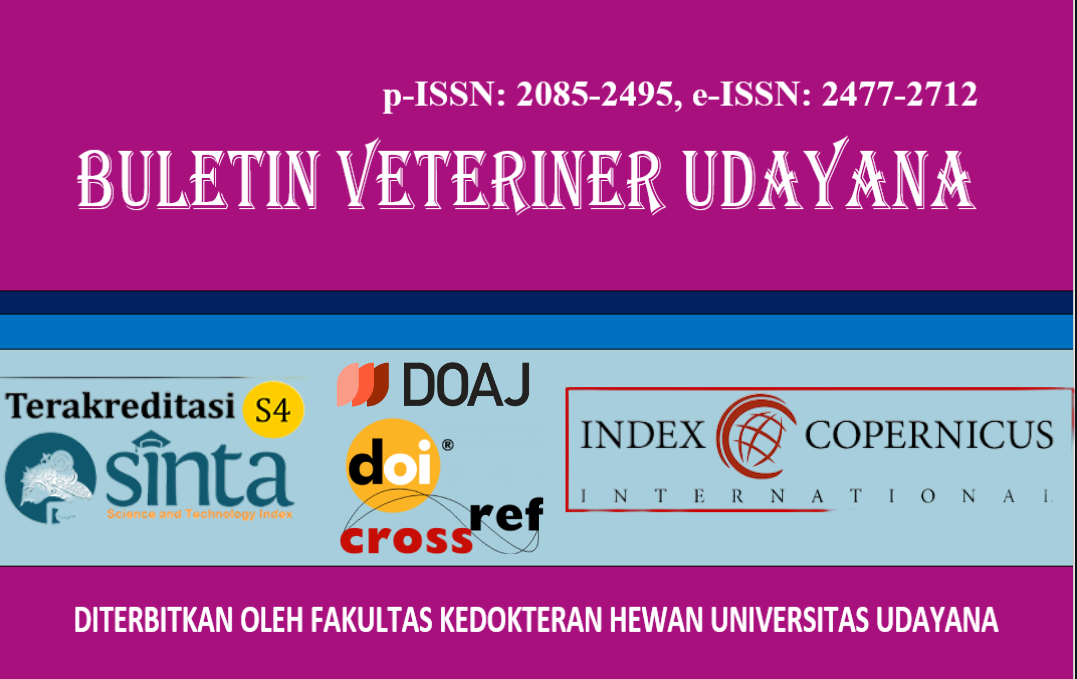CONTAMINATION OF COLIFORM BACTERIA IN CHICKEN AND FISH MEAT IN TRADITIONAL MARKET
DOI:
https://doi.org/10.24843/bulvet.2025.v17.i01.p14Keywords:
Coliform, chicken meat, fish meat, traditional marketAbstract
Meat is highly perishable food that easily contaminated by various microorganisms from its surrounding environment. Meat has the potential to serve as a growth medium for microbes such as Coliform bacteria, due to its high nutritional content. The presence of Coliform bacteria in certain quantities can be an indicator of hygiene and a sign of the presence of pathogenic bacteria. One of the Coliform species frequently found in contaminated chicken meat is Escherichia coli (E. coli). While Escherichia coli is a normal flora of the gastrointestinal tract, some strains are pathogenic and can cause diarrheal diseases. This study aims to assess bacterial contamination in chicken and fish meat sold in traditional markets, ensuring food safety and preventing foodborne diseases. The method used in this research is a literature review, by sourcing relevant scientific articles and research journals related to the topic. The results showed that in chicken meat there were 87 samples tested positive for Coliform and 16 samples tested negative, whereas in fish meat there were 6 samples positive for Coliform, and 4 samples tested negative. The bacterial contamination was attributed to a lack of attention to hygiene during the processing, storage, and distribution of chicken meat. The researchers concluded that Coliform contamination found in meat sold in traditional markets contributes to the degradation of meat quality, rendering it unsuitable for human consumption. Therefore, strategies are needed to prevent and control contamination in the distribution of chicken and fish meat. This includes ensuring sanitation during slaughtering, processing, environmental cleanliness, unloading from fishing vessels, marketing, storage, and distribution to maintain cleanliness and hygiene. Additionally, the use of effective disinfectants that comply with food safety standards is crucial to achieving a “from farm to table” approach.




